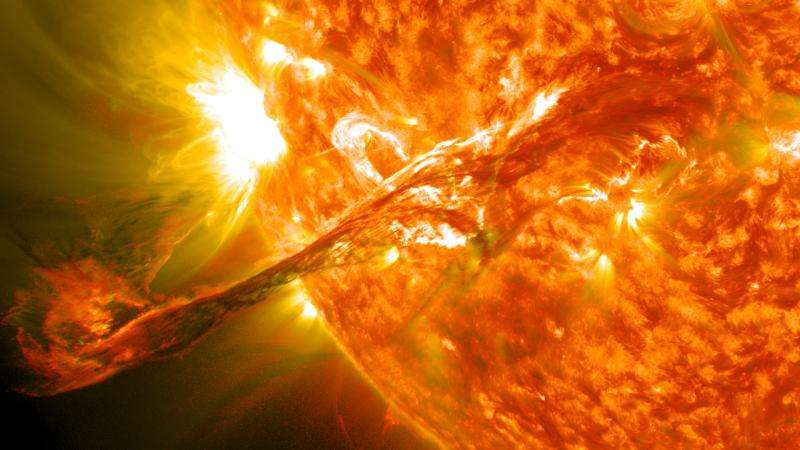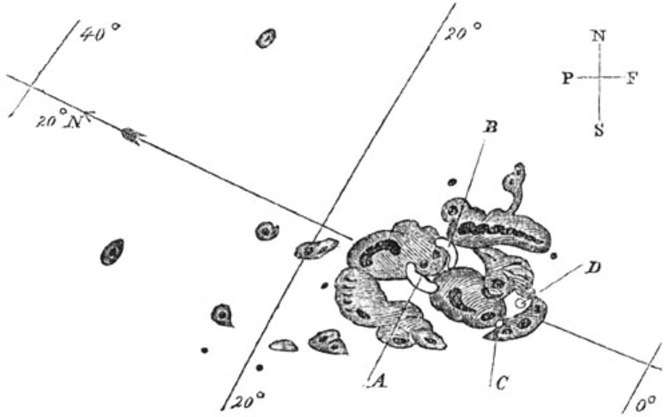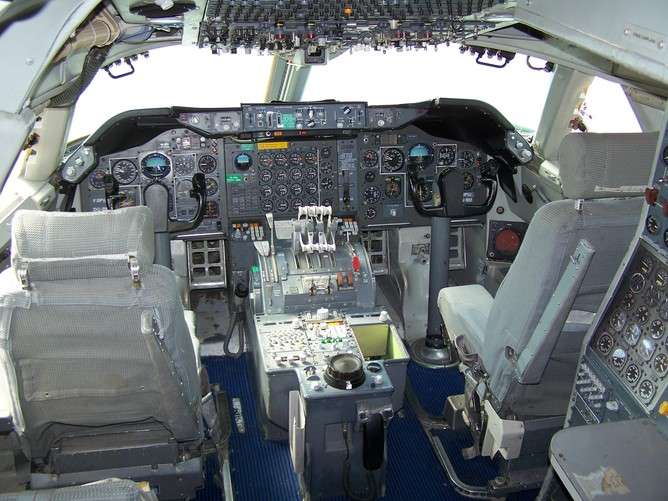How to protect planes and passengers from explosions on the surface of the sun

Air travel today is extraordinarily safe. Despite the high profile downings of MH370 and MH17, aviation magazine Flightglobal found 2014 to be the safest ever year of air travel. But natural events, such as the Icelandic volcanic eruption and ash cloud in 2011, can sometimes pose unexpected but critical questions for air safety.
Solar storms now feature alongside volcanic eruptions on the UK national risk register and are at least as difficult to predict. The most dramatic storm on record, the Carrington event of 1859, caused ground level magnetic measurements to go off-scale. It occurred before air travel existed, but still damaged electrical and telegraph equipment on the ground. What risk would such an event pose for aircraft and their passengers?
Solar fireworks
Explosions on the sun's surface, called solar flares, are common. On average, one such event per year will emit a burst of very energetic protons. These are the same positively charged particles as those used in the Large Hadron Collider's experiments. Such high-energy proton surges can last for several hours and there is no way of predicting them. Neither is there any warning as the particles travel close to the speed of light.
When the protons hit molecules in the upper atmosphere they create secondary radiation. Of particular concern are the neutrons that are produced, which penetrate to the altitude passenger aircraft cruise at, and even down to, ground level.
There is always a moderate background radiation at aircraft altitudes of 30,000-40,000 feet due to constant low-level bombardment by cosmic rays. The quiet-time radiation at cruising altitudes is about 300 times that at ground level, but extreme space weather such as the Carrington event could increase aircraft radiation levels by a factor of more than 1,000.
Passenger radiation dosage
The most obvious adverse impact is the radiation dose delivered to passengers and crew. Radiation dosage is given in sieverts, a measure of the biological impact of absorbed radiation. In a Carrington Event, passengers could receive a one-off dose of 20-50 millisieverts (mSv). This is a significant additional dose for crew members who are typically limited to 4-6 mSv per year.

For passengers, such a dose would be many hundreds of times more than they would normally get on a single flight from London to Los Angeles. However, a 20 mSv dose implies only a 0.1% increase in lifetime cancer risk for each person exposed, compared to a lifetime cancer risk of about 30%, and hence the radiation impact is probably quite small.
Solar storms and aircraft control systems
Radiation from a solar storm may be unlikely to cause passengers direct harm, but what about the effect on the plane itself? Modern aircraft are heavily reliant on computerised systems (avionics), but research has shown that the microelectronic chips used in these systems are increasingly vulnerable to being upset or damaged by radiation encountered high in the atmosphere.
Microelectronic chips can be corrupted or even destroyed by radiation. Such problems, known as "single event effects" (SEEs), are well known in space engineering but much less so in the aircraft industry. SEEs are suspected by the Australian Transportation Safety Bureau to have been involved in an aviation incident more than northwest Australia in which over a hundred passengers were injured.
Aircraft computers have inbuilt safeguards, such as error checking and backup systems, which are effective in normal radiation conditions. However, in an extreme event the rate of chip failures will increase by a factor 1,000 or more and aircraft systems could start behaving in unexpected ways.
At the same time, there will be upsets to high-frequency radio communications systems due to disturbances to the ionosphere caused by the event. Poor communications and misbehaving systems will add to the pressure on the pilot and increase the likelihood of mistakes and accidents.

Lessons from space engineering
Just as we need to know how aircraft engines react to volcanic dust, we need new research to understand how modern avionics react to neutrons, and to better define extreme space weather environments.
As with other weather-related risks to aircraft, such as lightning, we need a combination of engineering and operational measures. Already avionics standards are being improved and major new radiation test facilities are being built – in future aircraft will be built more like satellites.
No engineering system is built for all eventualities. For the most severe radiation environments, avoidance is the way to go, by delaying take-offs until the storm subsides. Flight altitudes can also be reduced where air traffic allows to minimise the radiation encountered.
These actions require reliable information on current atmospheric radiation to be made available to pilots, which is sorely lacking at present. Better aerospace meteorology can help improve air safety in the face of the unfamiliar, but real, threats posed by space weather.
Source: The Conversation
This story is published courtesy of The Conversation (under Creative Commons-Attribution/No derivatives).
![]()





















